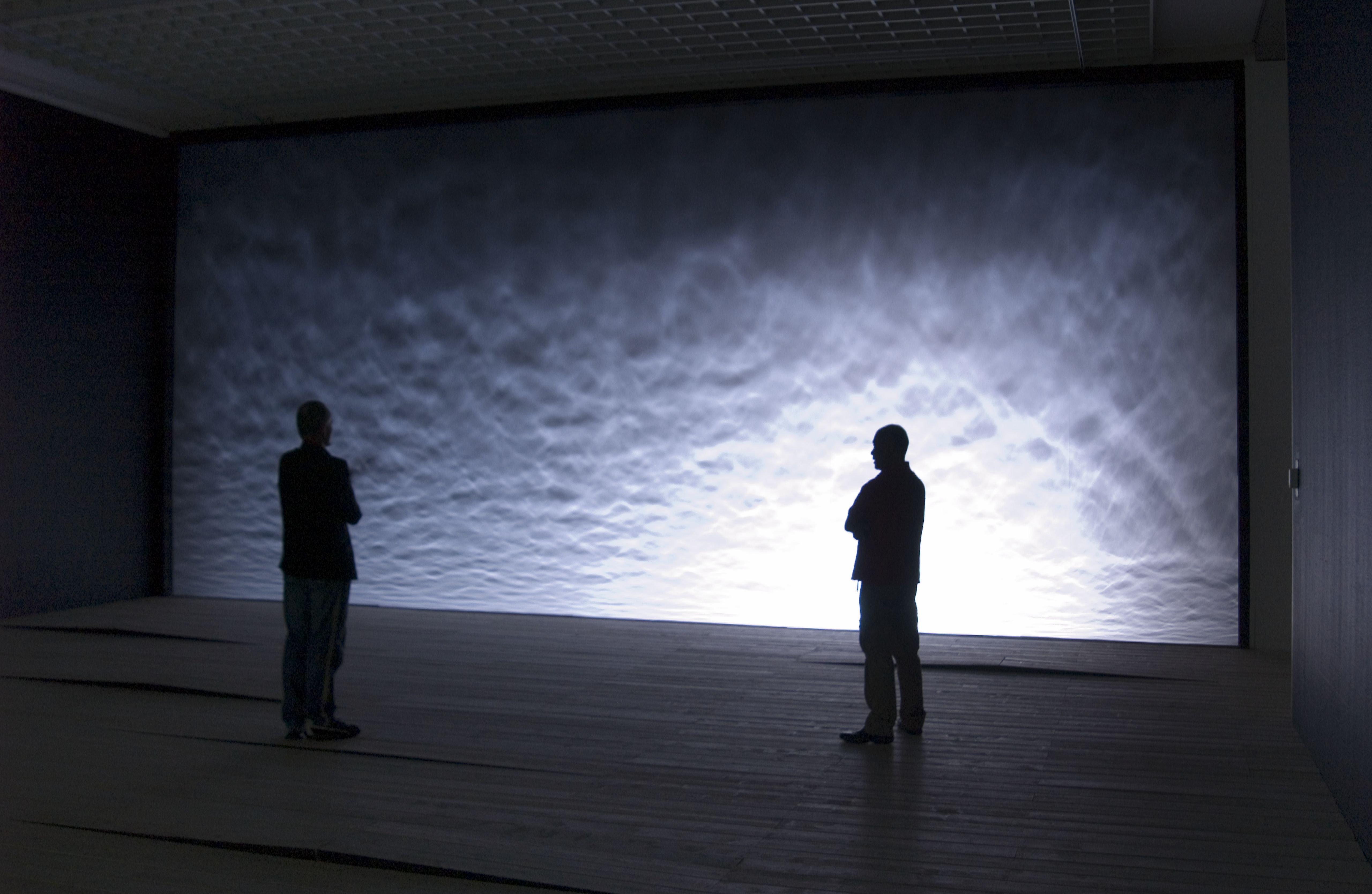 |
|
|

PHOTO Hans Wilschut
|
|
Spinning tops and frozen cars
I'm a people lover, not a nature lover, says this Scandinavian artist
Oct 4th 2007 | from the print edition
www.economist.com/node/9903963?story_id=E1_JJDPJGP
WHEN asked to describe his work, Olafur Eliasson, replies “My art is about you.” This might sound strange, coming from an artist who is famous for creating a giant artificial sun at Tate Modern, who has just built a pavilion that looks like a spinning top in London's Hyde Park and is showing pieces ranging from a rainbow to a frozen hydroelectric car in his new retrospective at San Francisco's Museum of Modern Art. But for Mr Eliasson, the viewer's interaction with his art is an essential part of it.
For the past 15 years, the artist, born in Denmark in 1967 to Icelandic parents and now based in Berlin, has been quietly creating what might be called total-immersion art. “I make art that creates an experience, not a representation,” he says. For instance, he has dyed rivers green in cities from Stockholm to Tokyo in order to stimulate people to look afresh at their urban surroundings.
His show at San Francisco (which is there until February, goes on to New York and Dallas and will be in Sydney by the summer of 2009) includes walk-in kaleidoscopes and installations of mist, clouds and backward-flowing waterfalls, walls made of moss, sculptures of wood and mushrooms, and floors of compressed soil. He aspires to create art that is recyclable, made of sustainable materials.
As he walks up the ramp of the new pavilion he has co-designed with a Norwegian firm, Snohetta Architects, at London's Serpentine Gallery, he speaks with messianic fervour about his mission to engage people through art: “I want to create art that allows people to be singular and plural, to have an individual experience...and at the same time engage with other people and the landscape around them.” The pavilion (open until November 5th) is designed in a way that defies representation: it doesn't photograph well and can't be described in a sound-bite. The only way to understand it is by experiencing it.
The central element is a ramp, which Mr Eliasson has emphasised by spiralling it around the building from the ground to the roof, giving viewers panoramic vistas of the park as they ascend, and a panoptic vision of the interior when they reach the top. Inside he has created a grotto-like space, where amphitheatre seating curves around to meet the walls. An oculus in the ceiling lets in a diagonal shaft of light while low-energy lamps emit reddish beams. It looks like a wacky, 21st-century twist on the Baroque.
Mr Eliasson believes that art today has an unprecedented opportunity to effect social change. “When I was a student, people became artists to step away from the world; now it is a way to engage with it.” Seeing indifference and homogeneity in public life, he wonders: “Why do people no longer have faith in basic social interaction? How does the individual fit within the collective?” Mr Eliasson constantly poses such questions in his work.
His interests in aesthetics and ethics converge in his new design for a hydroelectric car for BMW on show in San Francisco. Displayed in a chilled room, the car is encased in a translucent steel mesh covered in ice. Literally frozen in its tracks (though it has been known accidentally to melt), the vehicle is a reflection on the relationship between the car industry and global warming. The ice calls attention to the fact that hydrogen becomes fuel-ready only at sub-zero temperatures.
When asked how he squares his work for companies such as BMW with his antipathy to corporate values, he admits ambivalence. Nonetheless, he says, “I live in this world, not a parallel universe, and I have to engage with it.” He funnels the money he makes from such projects into his charitable foundation, 121ethiopia.org, which finances orphanages in Ethiopia.
Mr Eliasson's Scandinavian roots are often cited as an inspiration for his green politics and his use of natural elements. But he rejects this, insisting that he is not obsessed with clichés about the purity of the Nordic environment. “I am not a nature lover, I am a people lover. That is why I am an artist: I use art to engage people.”
from the print edition | Books and Arts
 Copyright Protected Copyright Protected |